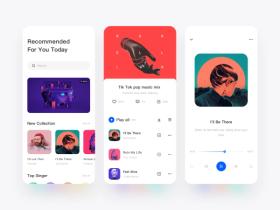How Much Does It Cost To Build An MVP: MVP Costs Explained
Published: May 2, 2022
10 min read
In this article, you'll learn:
1
📱 A Few Words About the Product MVP Concept Itself
2
📊 What Does the MVP Cost Depend On?
3
💸 How Much Does an MVP Cost: Estimate Examples
4
💡 Takeaways
Therefore, in this article, we’ll provide you with realistic insights on how much it costs to build an MVP. Despite it's usually considered a "first version" of the app, an MVP pricing is not that different from a usual mobile app cost. Spoiler: they are between $15,000-$50,000 on average.
However, before we break down the MVP development cost and what affects it, let’s spend a minute to recall what a Minimum Viable Product is and is not.
Note: if you’re already a walking encyclopedia of Minimum Viable Products, jump right to the MVP costs part.
📱 A Few Words About the Product MVP Concept Itself
The MVP concept was introduced by Frank Robinson in 2001. However, it became widely popular thanks to Eric Ries and Steve Blank.
An MVP (a.k.a. Minimum Viable Product) is a version of your Product that has a minimum necessary set of features to solve the initial problem, satisfy early customers and collect user feedback for further development.
The concept is often referred to as the first version of your Web or Mobile App. And it's true since usually you don't move to the next software development stage until you prove your idea.
MVPs can be used by both a Startup and a Business — the type of company doesn't play a big role here.
MVP development has a few noticeable advantages over other approaches to product development. What are they?
However, this article is about the cost of MVP, so let’s get back to our initial topic.
📊 What Does the MVP Cost Depend On?
Every team or expert will give you different estimates when it comes to MVP development costs. Even if you describe your project the same way, the estimates will still be different. This happens because MVP software costs depend on a range of variable factors. The most important of them include:
- The scope of design and development tasks
- Needed technology stack
- Type of development team
- Hourly payment rate of your development company
- Type of contract
Let’s take a closer look at them!
Scope of work 💼
One of the most substantial factors that affect MVP costs is the scope of work. In other words, what features and functionality you’d like to see in your mobile or web application.
Except for a number of features, developers may also take the сomplexity of implementation or rge need to use a specific technology, framework, etc, into account.
💸 How Much Does an MVP Cost: Estimate Examples
As we said at the very beginning of the article, the average costs of MVP development lie around $15,000-$50,000. To make these calculations, we reviewed the costs of already finished projects by the Stormotion team, as well as our general estimates. To turn hours into $, we took the average rate for professional dev agencies from Eastern Europe which is ~$40/hour.
For our other articles, we also prepared estimates for the FrontEnd part of mobile applications — an approximate price of an app. Also, these estimates were made for MVP Projects that are supposed to be built with React Native, a framework for mobile cross-platform app development.
Take a look:
Click on the type of app to check related articles.
Was it helpful?
Read also

Stormotion's ChatGPT Journey

Top 5 Best Practices for Integrating ChatGPT in Your App

How to Build SaaS App Like Spotify
Our clients say
![Stormotion client Alexander Wolff, CPO from [object Object]](/static/a16ba3c9580effc3ab9a68d115eadffe/b0e74/alex.png)
When I was working with Stormotion, I forgot they were an external agency. They put such effort into my product it might as well have been their own. I’ve never worked with such a client-focused company before.
Alexander Wolff, CPO
Sjut
